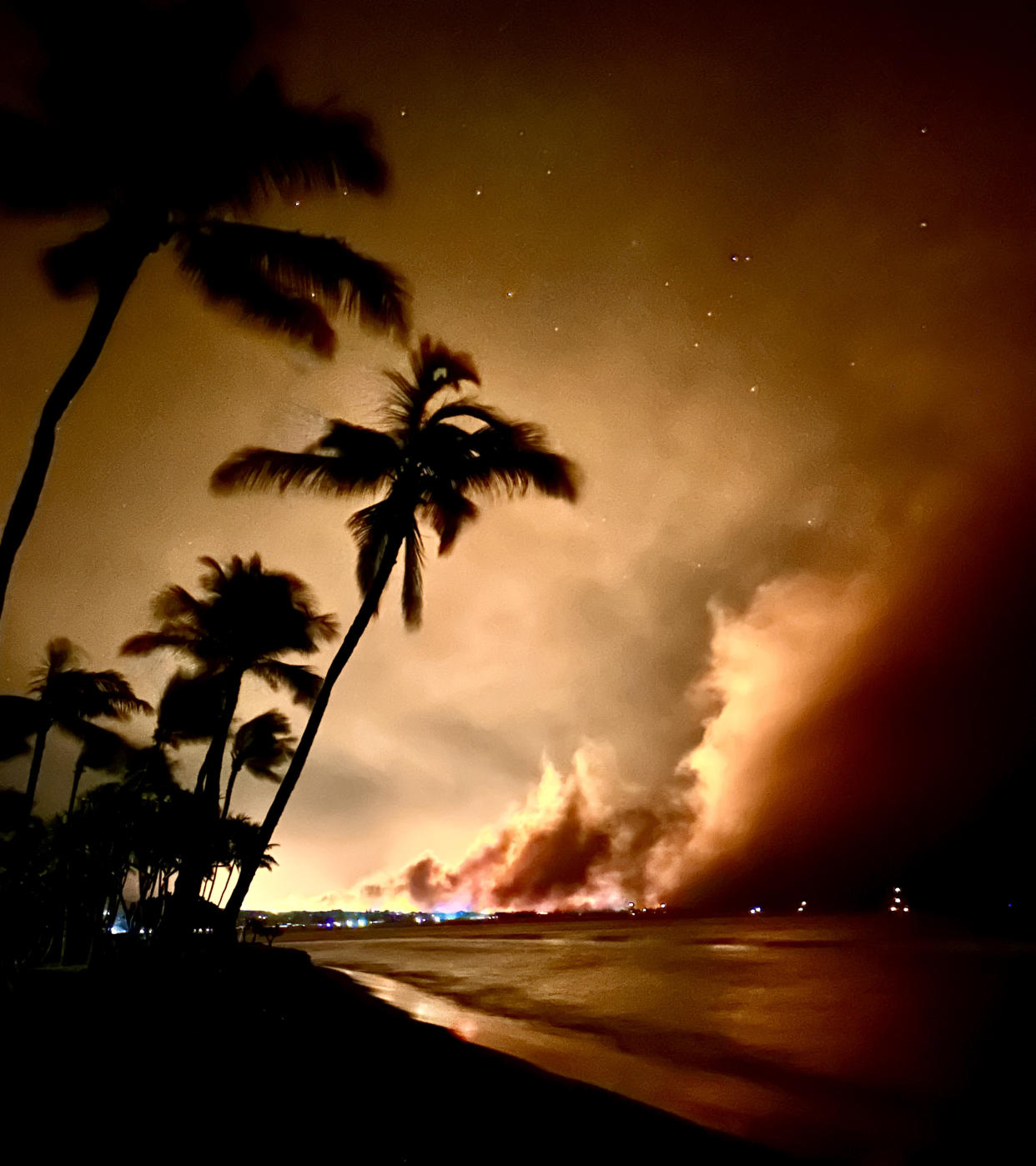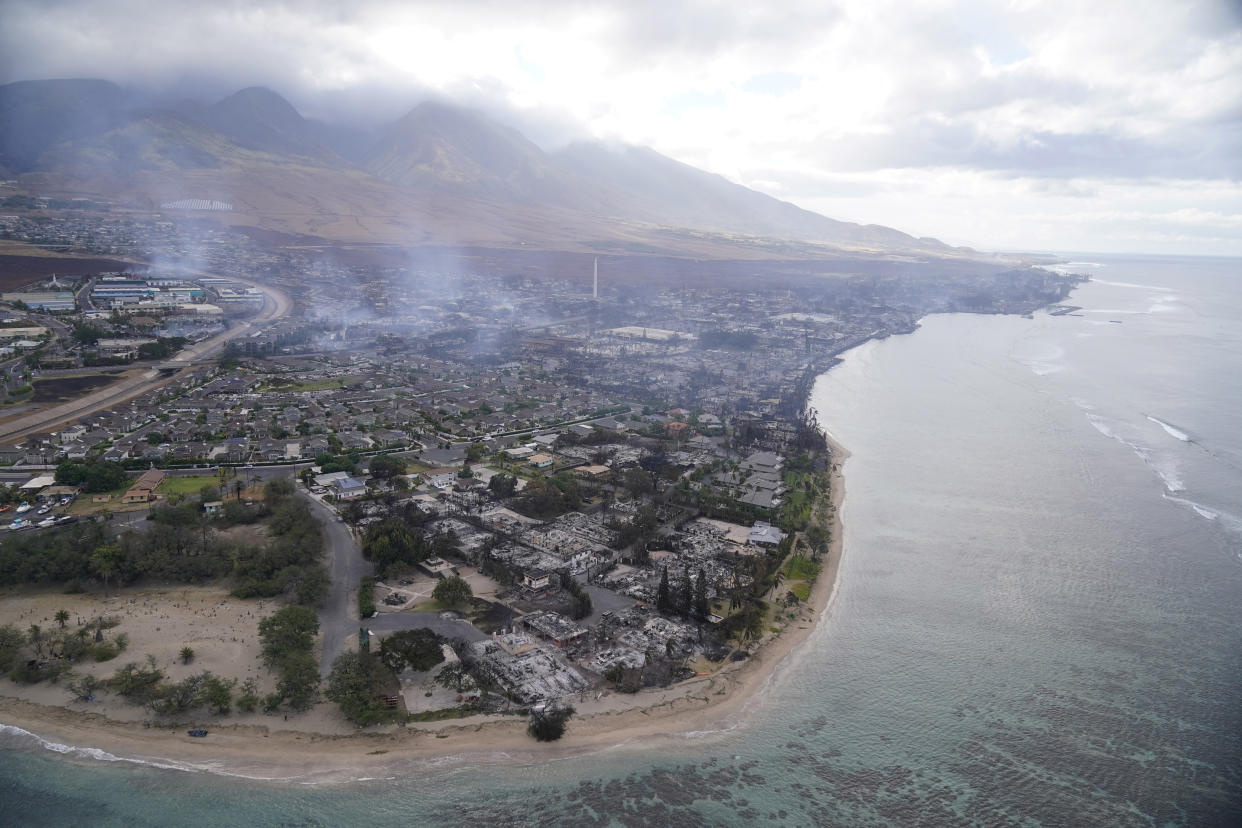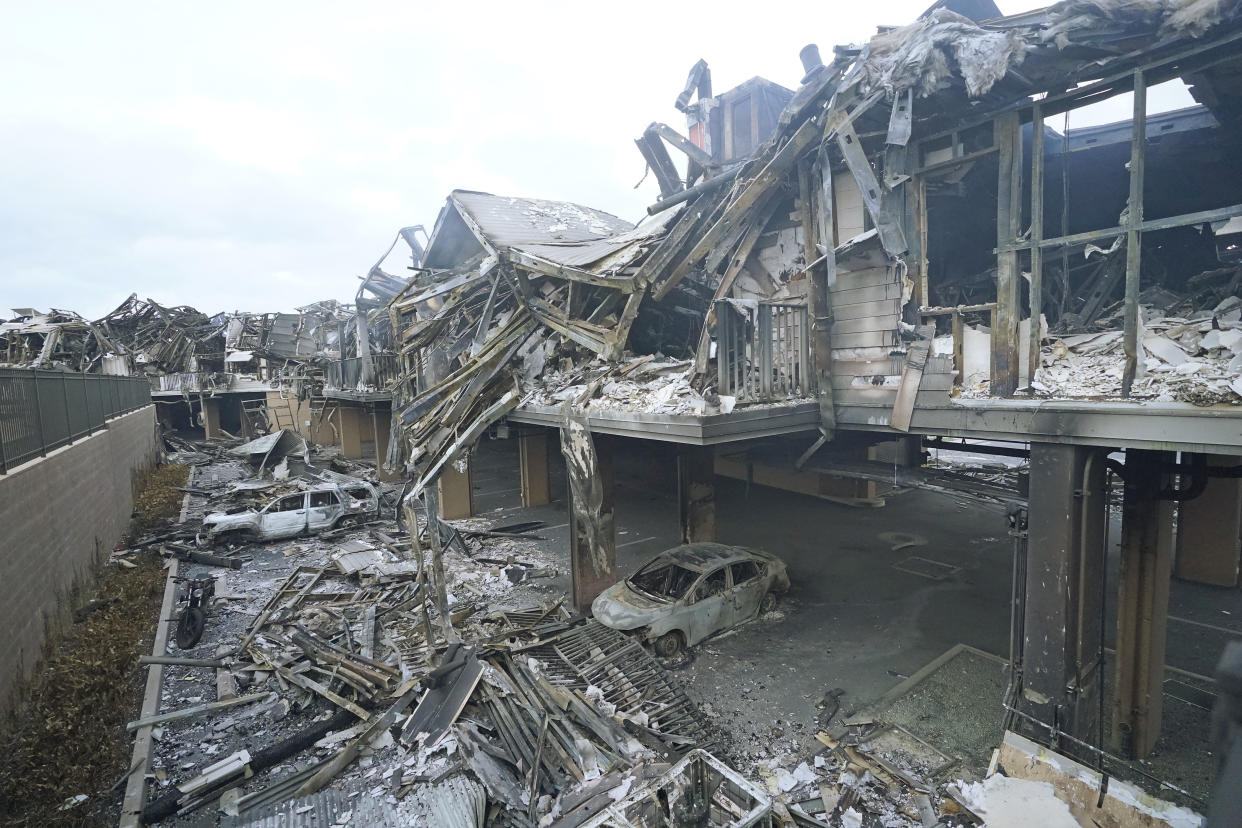Our dream vacation to Maui turned terrifying — and we were lucky
When we arrived for our family vacation on July 31, I spoke with my wife about how dry the island of Maui felt, reminding me of the dry hills around Los Angeles instead of the lushness one expects in Hawaii. Our Uber driver talked about how dry it had been, which led us into a conversation about climate change. We were staying at the Marriott Maui Ocean Club in Kaanapali, 3 miles north of Lahaina village, and over the next few days we traveled to Lahaina a few times, where we shopped, ate and took a ferry to Lanai to visit a cat sanctuary. We also saw the historic banyan tree that was burned in the wildfires; I had wanted to come back to the tree to enjoy it a bit more.
Strengthening winds and power outages
On Monday evening, Aug. 7, the winds from Hurricane Dora picked up as we were eating dinner at the Feast at Lele, a restaurant and entertainment venue in Lahaina — and I urged us all to get home as soon as it ended. Our power, cell service and Wi-Fi all went out late that night.

Tuesday morning we woke up early and found that the power was still out at the hotel. There was smoke on the horizon, in the direction of Lahaina, but it didn’t seem too bad. We loaded the kids into the car and went out in search of food, thinking we’d surely find a local business that had a generator. But everything was closed except for the Honolua store, where a long line snaked through the aisles and out the front door. As we waited for two hours to buy something to eat, a local couple informed us how lucky we were to have stumbled upon the store, as it was one of the only places open since the ferocious winds of Hurricane Dora had knocked out power to parts of the island.
Still largely unaware about how bad things were getting, we headed south to visit the Maui Ocean Center aquarium. But after we'd gotten stuck in another traffic jam, the sight of downed trees and power lines made clear this was no ordinary windstorm. We finally decided to turn around, having not even made it out of Lahaina, and head back to the resort. It was then we realized the extent of the smoke.
Read more on Yahoo News:From food banks to shelters and cash donations, here’s how you can help Hawaii’s wildfire victims
When we arrived back at the hotel, the winds were terrible; our kids had trouble standing and my wife had to grab my daughter to keep her from falling. We lost some beach gear, and my son lost his glasses as they blew off his head. Then my wife got hit by a large trash can blowing in the wind, for which she received medical attention. There was a lot of debris flying around — bell carts, towels, small branches and dust — and the hotel staff was rushing around trying to secure everything in place.

We spent most of the day in our dark hotel room. For dinner, I waited in a long line at an impromptu grill the resort set up. But when the food ran out, a lot of people were upset. I went to the resort shop that didn’t have any power, and it was packed with people stocking up on food and using their flashlights on their phones. My family just ate snacks for dinner: some almonds, Pringles and a box of Honey Nut Cheerios.
‘Whole town is burned down’
By Wednesday morning, we were still without cell service and power. I waited hours to get some warm ramen for my family, and it was while standing in line that I started hearing how badly the fires had affected Lahaina.
The “whole town is burned down,” one worker told me. “Probably going to be weeks without power,” said another. There were rumors about the airport being shut down. “Fire is coming toward the resort,” one person warned. Cruise ships were “on the way to evacuate our side of the island,” another guest said. Without the internet or phone service, we didn’t know what to believe.
We were scheduled to leave our hotel that night. I heard we could drive north, but workers at the front desk advised us not to use the Kahekili Highway, as it's a pretty dodgy road. After my wife and I discussed our options, we agreed it was worth attempting the drive. We did try to get gas before we drove, but the gas stations were already empty and crowded with people waiting for shipments to arrive. With half a tank, we assured ourselves that if we got stuck we could shut the engine off to save gas.
Read more on Yahoo News:Photos capture Lahaina devastation as death toll rises from Maui wildfires: 'Feels like a bomb was dropped'
The one-lane, cliffside road was indeed a dangerous drive, but cars were mostly headed in the same direction as us, so being part of a caravan made it a bit more comfortable. Locals were trying to help control the flow of traffic, but it was a chaotic scene, with many cars from the opposite direction stalled at the side of the road and people uncertain of which way to go.

It was only after we got past the windy cliffside section of the road and got cell service that we understood the severity of the situation we had just left, and the reality of devastation and the lives lost. Later we would learn that at least 80 people were dead from the wildfires — one of the deadliest in history — and that the toll is expected to rise. We knew it was an international news story when texts started to pour in from loved ones asking if we were safe.
Kahului Airport was packed with people trying to get out, but most were calm and courteous. While we felt deep gratitude for being able to return home, our departure from Maui was mostly filled with sadness for the locals we were leaving behind, many who had lost family members, friends, homes and businesses.